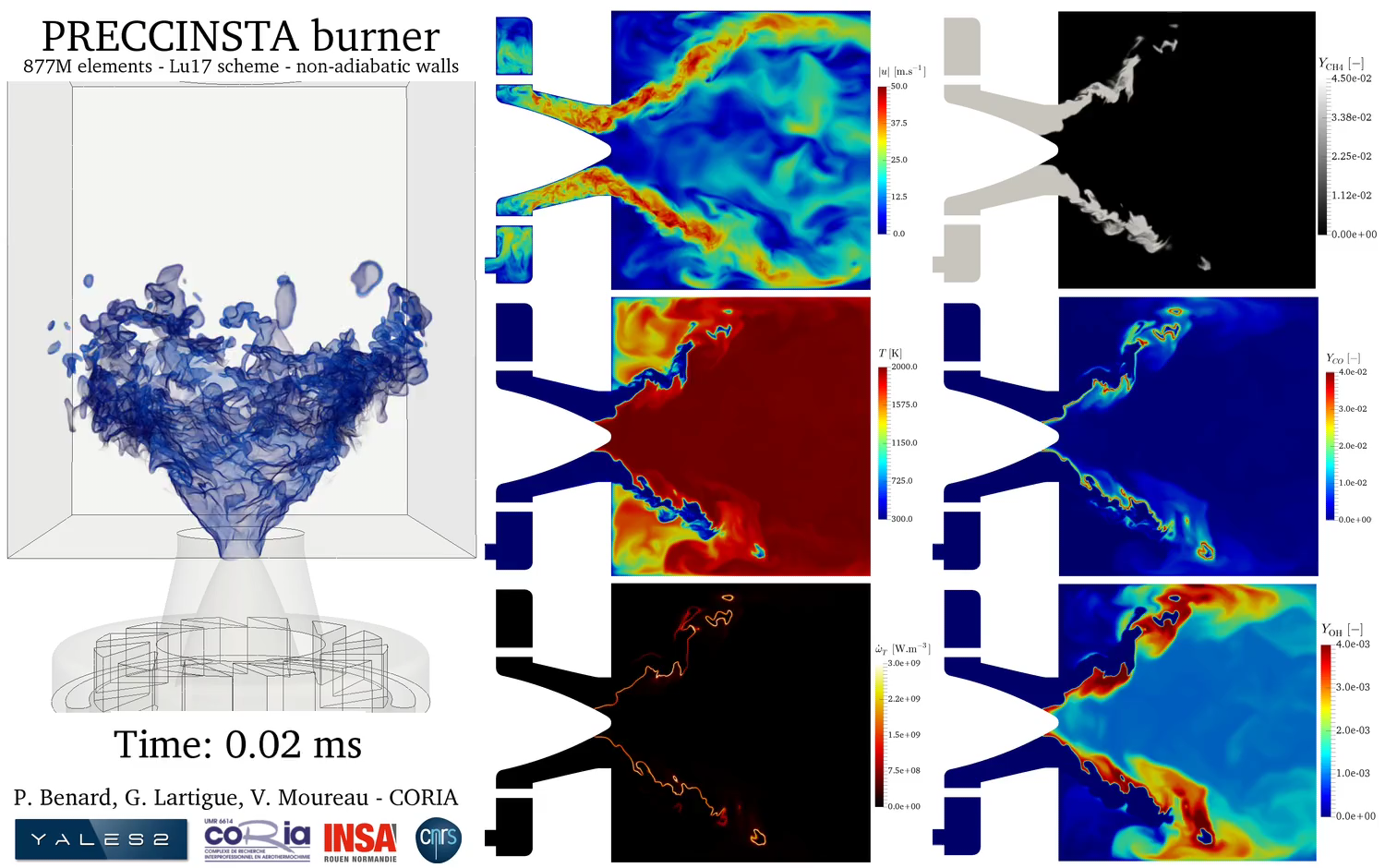
Large-Eddy Simulation of the PRECCINSTA burner with finite-rate chemistry and wall heat loss
In order to reduce nitrogen oxide emissions, aircraft gas turbine manufacturers try to lower the maximum temperature level in the combustion chamber. Lean premixed combustion is a simple way to achieve this. However, this type of flame is less robust than non-premixed flames, and therefore leads to a reduction of the operating margins. Engine manufacturers and researchers worked for several years to model and understand these flames.
References
[1] MOUREAU, V., DOMINGO, P. & VERVISCH, L. (2011) From large-eddy simulation to direct numerical simulation of a lean premixed swirl flame : Filtered laminar flame-pdf modelling. Comb. and Flame 158, 1340–1357.
[2] MERCIER, R., MEHL, C., FIORINA, B. & MOUREAU, V. (2019) Filtered wrinkled flamelets model for large-eddy simulation of turbulent premixed combustion. Comb. and Flame 205, 93–108.
[3] VEYNANTE, D. & MOUREAU, V. (2015) Analysis of dynamic models for large eddy simulations of turbulent premixed combustion. Comb. and Flame162(12), 4622 – 4642.
[4] MERCIER, R., MOUREAU, V., VEYNANTE, D. & FIORINA, B. (2015) LES of turbulent combustion: on the consistency between flame and flow filter scales. Proc. Combust. Inst.35(2), 1359–1366.
[5] BENARD, P., LARTIGUE, G., MOUREAU, V. & MERCIER, R. (2019) Large-Eddy Simulation of the lean-premixed PRECCINSTA burner with wall heat loss. Proceedings of the Combustion Institute,1–11.
[6] MOUREAU, V., BENARD, P., LARTIGUE, G. & MERCIER, R. (2019) Dynamic adaptation of tetrahedral-based meshes for the simulation of turbulent premixed flames. 17th International Conference on Numerical Combustion. Aachen, Germany.





